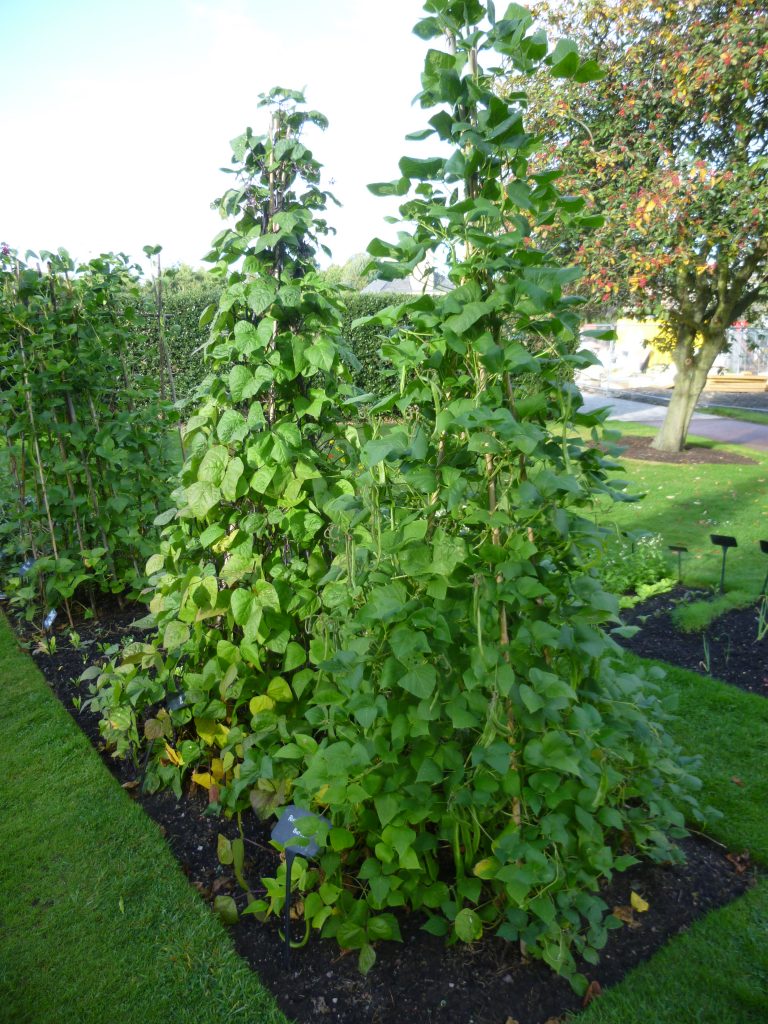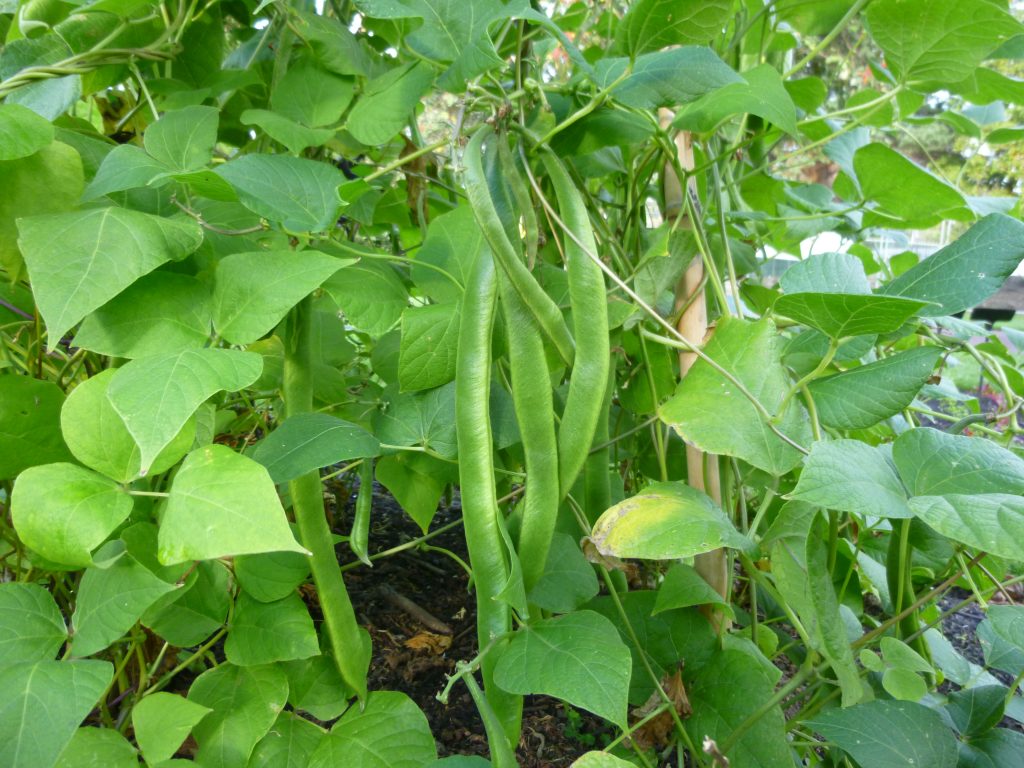Runner beans (Phaseolus coccineus) can become overwhelming at this time of year. In this cool, overcast summer it seems like we have been waiting all year for them to get going. Now they are producing more than we can eat! However there are plenty of tasty recipes out there. This week I cooked a simple Mediterranean inspired runner bean and potato stew.
Here is the recipe:
Chop four medium sized waxy potatoes into small chunks and boil in salted water until tender.
Meanwhile sauté a chopped onion, several cloves of garlic, a large handful of finely sliced runner beans and some thyme leaves in plenty of olive oil until everything is soft.
When the potatoes are cooked add them to the sauté dish along with a tin of chopped tomatoes. Simmer until the sauce thickens (I added an optional teaspoon of dark muscovado sugar to counteract the acidity of the tomatoes).
To finish the dish add some seasoning, chopped black olives and finely chopped parsley.
Serve with salad and chunks of crusty bread.
How to grow runner beans
Runner beans like rich soil and plenty of water. Therefore it is a good idea to improve the soil where you are going to grow them with well-rotted organic matter such as compost or manure.
Runner beans are tender so cannot be planted out before the last frosts. This is usually mid-May to early-June in Edinburgh. To get an early start sow the seed in mid-April in deep pots or root-trainers in a greenhouse or on a windowsill.
Once the risk of frosts has past and the plants have developed a few leaves it is time to plant them out. They will need to be ‘hardened off’ first. Gradually acclimatise the plants to outdoor conditions by taking them outside for progressively longer periods of time.
When planted runner beans need something to climb up. Make a wigwam or A-frame from long bamboo canes. Initially tie the plants to their supports; once established they will climb themselves. Remove the tip of the plants once they reach the top of their support. This encourages side shoots and more beans.
Keep an eye out for slugs and blackfly.
Runner beans are very productive from August to early October. Use them fresh or blanch and freeze them for future use.

